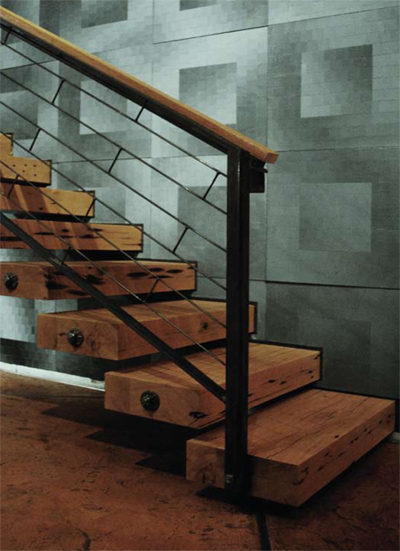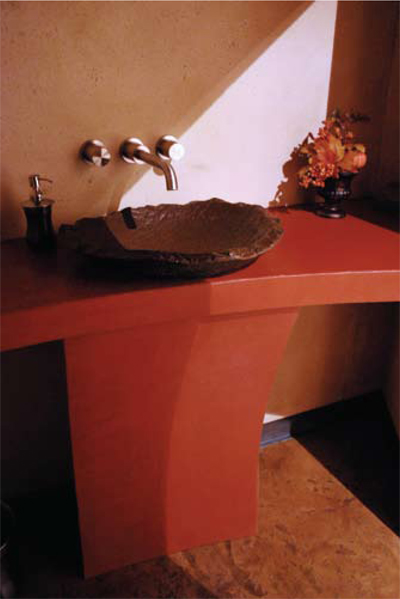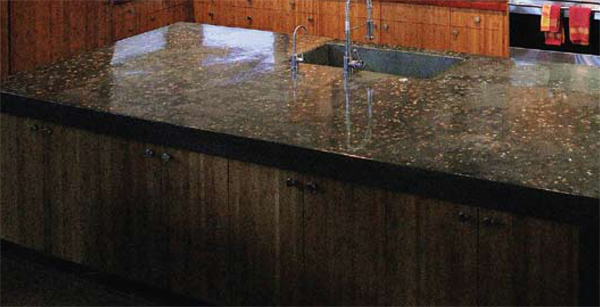Concrete is an ideal medium for artistic experimentation and the application of functional and decorative elements. Local artisan, craftsman and owner of Cliffhangers, Inc., Jon Nasvik, has spent his career exploring the potential of concrete, and he especially enjoys innovating new uses for this versatile material. The Wood River Valley holds numerous examples of Cliffhangers’ work. Others can be found in the Mall of America in Minneapolis, the Grand Wailea Hotel on Maui, the Tropical Forrest Pavilion at Franklin Park Zoo in Boston, and the Dan Hotel in Eilat, Israel. Yellowstone and Mt. Rainier National Parks have miles of naturalistic simulated stone masonry. Most recently and in his own home, Jon Nasvik has reached to new levels of application and artistry. Western Home Journal talks to Jon Nasvik about the tragedy of losing his family’s long-time log home north of Hailey and his decision to rebuild. WHJ: How did it come about that you chose to build this home? In February 2008, my home was totally destroyed by fire. Fortunately, my family and I WHJ: How and why did you come to be interested in concrete as a material for your new home? Other than the fact that concrete is a durable, low maintenance, relatively inexpensive, locally available, ultimately green, and a highly adaptable building material, there was one other reason why I chose it as the #1 building material for my home: It doesn’t burn.
WHJ: How did you use concrete in your home? Interior and exterior wall panels, floors, counter-tops, sinks, tubs, showers, door panels, fireplace, driveways, outdoor furniture, waterfalls and other landscaping features were all created with concrete for our new home. WHJ: What are the reactions to what you have built? Reading this, you might think: too much concrete. Certainly there were concerns in the design stage about this, but the responses so far say otherwise. Concrete doesn’t have to appear cold and austere. I think its reputation comes from how it has been used, not by how it can be. WHJ: What have you learned, and where do you think it will take you? It’s been said that concrete workers are set in their ways. As the owner of Cliffhangers, Inc., I confess that I’m guilty. But, not completely guilty, because there is always something new to learn from it, and I’m always seeking some new way to use it.
|
[bannergarden id=”1″] |
| [bannergarden id=”2″] | |
| [bannergarden id=”3″] |

 were safe. Although losing our home truly was a tragedy for us, it also became an opportunity for my company to express the diverse and aesthetic uses of concrete.
were safe. Although losing our home truly was a tragedy for us, it also became an opportunity for my company to express the diverse and aesthetic uses of concrete. WHJ: Is there a down side to concrete? Making good choices with it is the difficult part. Concrete “white elephants” can be difficult and expensive to eliminate.
WHJ: Is there a down side to concrete? Making good choices with it is the difficult part. Concrete “white elephants” can be difficult and expensive to eliminate.